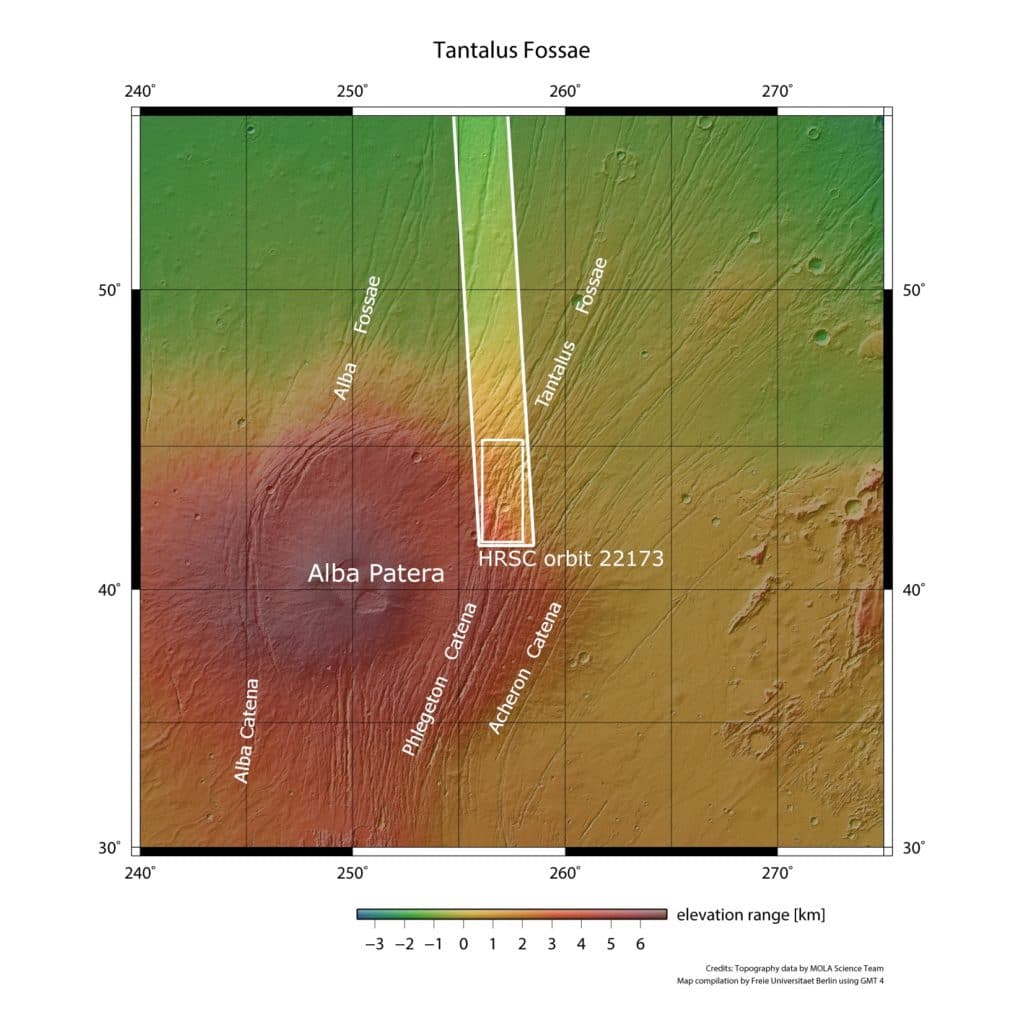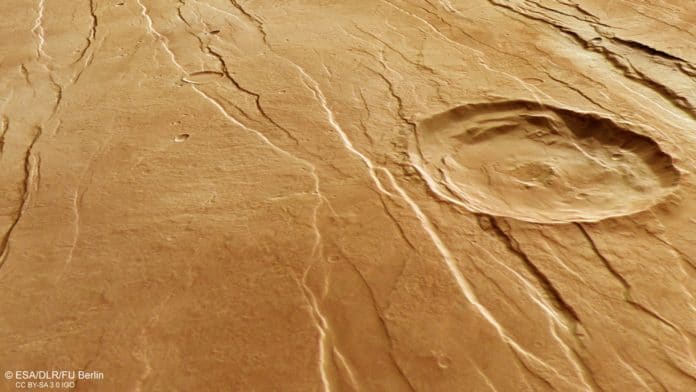Tantalus Fossae is a giant fault system on Mars, formed by a network of long grooves and scratches. It is noticeable and has no dramatic formation history.
ESA’s Mars Express recently showed this system. This system of troughs flanks a sprawling, low-relief martian volcano named Alba Mons, running along the volcano’s eastern side.
The summit of Alba Mons rose in elevation, creating the fossae. The elevation caused the nearby surface to become warped, extended, and broken. Faults of this system are a great example of a surface feature known as grabens. Each trench formed as two parallel faults opened up, causing the rock to drop down into the resulting void. Each trench formed as two parallel faults opened up, causing the rock to drop down into the resulting void.
Westside of Alba Mons seems to have the same features, forming an incomplete ring around the volcano. The associated grabens of this volcano run for up to 1000 km in length and 10 km in width and are up to 350 m deep.
The image shows several grabens running roughly northeast (bottom-right) to the southwest (top-left). These structures formed at different times, but one after the other. This offers scientists an opportunity to reconstruct a past timeline and picture of what created this dramatic landscape.

The large impact crater in the image’s center, for example, is crosscut by grabens, indicating that it existed before the volcano was raised and the Tantalus Fossae faults were formed. The second-largest impact crater (much smaller and to the bottom-left of the primary crater) appears to cover the faults, implying that it is younger.
When observed, many small, branching valleys would appear that cut directly through the grabens and are assumed to be older.
In the associated topographic view, the northern (right) part contains far lower terrain than the southern (left) part – in places as much as three kilometers lower in altitude. We would expect any small, branching valleys to run along the slopes of Alba Mons and merge where the ground is lowest, but this is not seen here, implying that the valleys must originate from more ancient times – before Alba Mons rose to sculpt this terrain into what we see today.
The mission’s High-Resolution Stereo Camera (HRSC), responsible for these new images, has revealed much about Mars’ diverse surface features. Recent images show everything from wind-sculpted ridges and grooves to volcanoes, impact craters, tectonic faults, river channels, and ancient lava pools.
